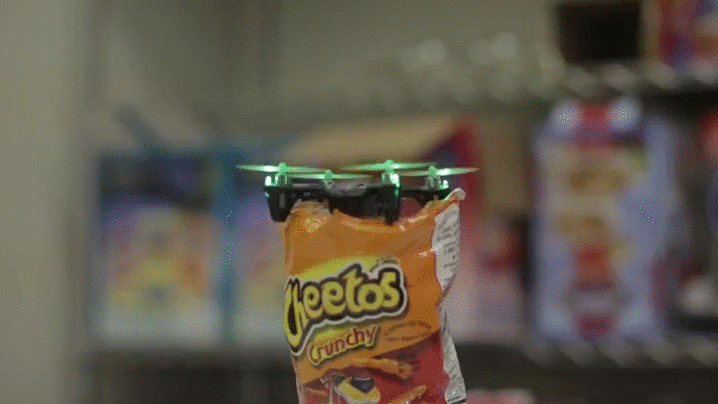The Economist has a report on the booming drone industry, which has grown many times faster than even most enthusiasts supposed it could, with 15,000 units now sold each month. Legislation clearly hasn’t kept pace with the innovation, so the article suggests the easiest way to arrive at proper rules of the “road” might be to allow the new tools to launch relatively undeterred, enabling us to “lead from behind” with experience as our guide. It certainly worked that way with the fledgling aviation industry of the early twentieth century, when thousands of startups attempted to build on and commodify the Wright brothers’ soaring success.
A hammer, however, is a tool or a weapon depending on how you swing it, and terrorists as well as Taco Bell would like to employ delivery drones. But while criminals might benefit from crowded skies in avoiding early detection, they’re also the least likely to remain within the boundaries of the law, so they can’t be the only priority when drawing up such guidelines. Such concerns probably need to be addressed with myriad approaches.
From a practical standpoint, the Economist identifies the industry’s two key needs: drones able to stay in the air for at least an hour and the development of sense-and-avoid technology.
The opening:
THE scale and scope of the revolution in the use of small, civilian drones has caught many by surprise. In 2010 America’s Federal Aviation Authority (FAA) estimated that there would, by 2020, be perhaps 15,000 such drones in the country. More than that number are now sold there every month. And it is not just an American craze. Some analysts think the number of drones made and sold around the world this year will exceed 1m. In their view, what is now happening to drones is similar to what happened to personal computers in the 1980s, when Apple launched the Macintosh and IBM the PS/2, and such machines went from being hobbyists’ toys to business essentials.
That is probably an exaggeration. It is hard to think of a business which could not benefit from a PC, whereas many may not benefit (at least directly) from drones. But the practical use of these small, remote-controlled aircraft is expanding rapidly. After dragging its feet for several years the FAA had, by August, approved more than 1,000 commercial drone operations. These involved areas as diverse as agriculture (farmers use drones to monitor crop growth, insect infestations and areas in need of watering at a fraction of the cost of manned aerial surveys); land-surveying; film-making (some of the spectacular footage in “Avengers: Age of Ultron” was shot from a drone, which could fly lower and thus collect more dramatic pictures than a helicopter); security; and delivering things (Swiss Post has a trial drone-borne parcel service for packages weighing up to 1kg, and many others, including Amazon, UPS and Google, are looking at similar ideas).•

